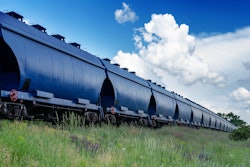
Artificial intelligence (AI) could hold a transformative power in elevating and upgrading the grain handling and processing industry.
AI and computer vision technologies are revolutionizing agriculture. Tomorrow’s grain elevators will need to rely more on automation and data to increase productivity and increase efficiencies.
Here are a 3 ways AI could do just that.
1. Detect infestations to control pests
Computer vision technology will have a super ability to detect pest infestations in grain. Like all living things, insects in stored goods constantly evolve and methods for eradicating them must be adaptable and fully automated.
Machine learning algorithms will be used to identify each pest caught in a trap in real time. With data analytics, infestation levels can be identified and predicted, and corrective actions can optimize the intervention's cost and impact instead of waiting until after a spoilage incident is discovered.
2. Better grain quality through optimized storage and handling
AI could be used to optimize grain quality. It could improve grain elevator operations by foreseeing grain conditions, monitoring temperature, moisture content and other characteristics and related quality risks in real time.
AI could forecast and identify "hotspots" weeks or months in advance. It could control the fresh air supply in a grain store. Grain elevator operators will be able to use AI to predict and prevent severe grain spoilage and loss.
AI and machine learning technologies could also help the industry optimize storage and handling. The first automated task that would occur as grain enters a storage facility is weighing and sampling.
Robotic sampling devices and electronic scales can be used to collect grain samples from truck beds and place them in equipment for gauging quality and moisture content.
The grain in the truck is then discharged at the dump pit, where automatic controls will direct the grain to the appropriate bin for storage per instructions from the control room.
3. Predictive analytics to prevent mechanical breakdowns
AI can be used to improve grain elevator operations by using predictive analytics to anticipate and prevent mechanical equipment breakdowns. AI capabilities can generate data, identify problems and predict maintenance ahead of a breakdown. This could reduce unexpected failures.
A comprehensive modern system could be precisely configured to keep track of, handle and analyze any flaws and report on machine productivity. Day or night, anywhere in the world, anybody can access information on their laptop or cellphone.
Implementing AI into grain handling and processing facilities promises to bring changes to nearly every step of the process. Data analytics will identify and predict decisions to help prevent grain disease and spoilage. Automating grain loading and unloading will result in faster and more efficient operations. Predictive analytics will prevent mechanical breakdowns.
Melanie Johnson is an AI and computer vision enthusiast with technical writing experience. Passionate about innovation and AI-powered solutions, Johnson loves sharing expert insights and educating individuals on tech.
















